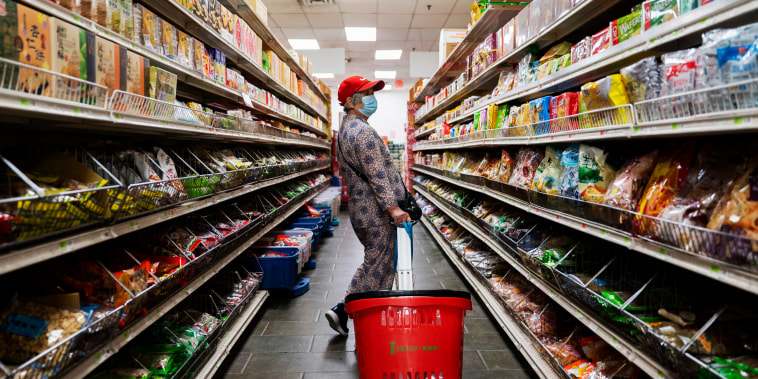
Inflation is down, but a return to ‘normal’ prices is a long way off
When did everything get to be so expensive and will prices ever come down again?
The good news is that price increases have already drifted downward from the heights we experienced just last summer. At one point, year-over-year inflation had reached 9.1%, the highest rate of price increases for goods and services since the early 1980s.
On Thursday morning, the Bureau of Labor Statistics will release inflation data for July. Economic experts are forecasting a year-over-year increase of approximately 3% — about the same as June.
But overall, prices for some goods and services have steadily increased over the course of the pandemic years. The evidence was front and center, as seen in the price of eggs, ground beef, gasoline, used cars, electricity and rent.
And while economists say the prices of some goods and services have started to retreat from their post-pandemic highs, the U.S. is unlikely to return to pre-pandemic price levels — what some may think of as ‘normal’ prices — any time soon.
‘It’s a very long journey from the peak inflation rates we saw just a year ago,’ said Mike Pugliese, director and senior economist at Wells Fargo. ‘We are pretty unlikely to see outright deflation unless we get a very severe recession,’ he added.
That deflation Pugliese mentioned — a decrease in prices and an increase in consumer spending power — may sound like a good thing, but it can have a negative impact on the economy. As prices fall, people tend to hold off on purchases in the hopes they can get things even cheaper at a later time. But what tends to happen in that scenario is companies struggle with the slowdown in sales and workers can lose their jobs as a result.
How did we get here?
At the outset of the inflation surge, economists laid out what was at stake: The combined effects of the Covid-19 pandemic and the war in Ukraine were disrupting supply chains, reducing the ability of businesses to deliver goods in a timely manner and with sufficient volumes — thus, prices for many things went up.
Later, it became clear the impact of pandemic-related fiscal stimulus payments, pent-up spending, and low interest rates, had unleashed a wave of demand for goods and services that was also putting upward pressure on prices.
Finally, a worker shortage, which was the result of Covid effects that led to direct long-term illnesses for workers; departures from the labor force to care for loved ones; and outright retirements, has raised the cost of labor.
Indeed, the current share of the population participating in the labor force is lower than pre-pandemic levels — something that has continued to make the cost of hiring workers more expensive.
‘We still have a lot of vacancies to fill,’ said Julia Pollak, chief economist at the job search company, ZipRecruiter.
All this has led to unexpectedly strong economic growth — and thus inflation. When households can count on having steady earnings, Pollak said, ‘they’re happy to keep spending, buy clothes, book airfare, and go to restaurants.’
Expecting consumers to keep spending gives businesses the green light to keep raising prices. Or as Wells Fargo’s Pugliese puts it: ‘It’s a little bit circular.’
What can be done to stop the cycle?
By raising interest rates, the Federal Reserve, America’s central bank, is hoping to make things so expensive that businesses and consumers capitulate and reduce their spending.
Federal Reserve officials and other economists have given recent indications that the chances of cutting interest rates this year are not likely and that, if anything, more rate hikes may be necessary.
Remember that, as of right now, interest rates are already the highest they’ve been in 20 years.
“We should remain willing to raise the federal funds rate at a future meeting if the incoming data indicate that progress on inflation has stalled,” Federal Reserve Governor Michelle Bowman said earlier this week.
‘A more inflationary economy could end up necessitating higher real and nominal policy rates,’ economists with Citibank wrote in a note to clients this week.
But as a result of that initial burst of federal stimulus and ultra-low interest rates back in the early months of the pandemic, the economy has become much less sensitive to interest rate hikes, said Jeremy Schwartz, an economist at the financial services group Nomura.
Compare that with the global financial crisis, when products like adjustable-rate mortgages were more widespread and many households were far less financially secure.
‘Households and businesses have proven resilient,’ Schwartz said.
A surefire cure to all this is higher unemployment: Fewer earners means less spending means less upward pressure on prices.
Andrew Patterson, senior international economist at Vanguard financial services group, says the unemployment rate may have to rise a full percentage point, from its current level of 3.5% to 4.5% — to get there.
‘It’s not something we’re hoping for’ Patterson said. ‘But we need to see the labor market softening.’
